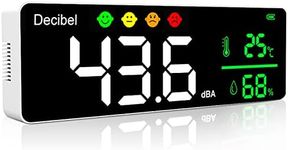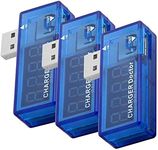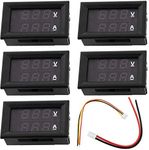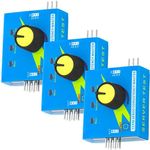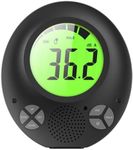Buying Guide for the Best Decibel Meters
When choosing a decibel meter, it's important to understand the key specifications that will help you find the best fit for your needs. Decibel meters, also known as sound level meters, are used to measure the intensity of sound in decibels (dB). They are essential tools for various applications, including workplace noise monitoring, environmental noise assessment, and audio equipment testing. To make an informed decision, you should consider several key specifications that will impact the performance and suitability of the decibel meter for your specific use case.Measurement RangeThe measurement range of a decibel meter indicates the span of sound levels it can accurately measure, typically expressed in decibels (dB). This spec is important because it determines the loudness levels the meter can handle. For example, a range of 30-130 dB is common and suitable for most general purposes, including environmental noise and workplace monitoring. If you need to measure very quiet or very loud sounds, look for a meter with a wider range. Choose a measurement range that covers the typical sound levels you expect to encounter in your specific application.
AccuracyAccuracy refers to how close the measurements of the decibel meter are to the actual sound levels. This is crucial for ensuring reliable data, especially in professional and regulatory contexts. Accuracy is usually expressed as a margin of error, such as ±1.5 dB. Higher accuracy (lower margin of error) is better, but it may come at a higher cost. For general use, an accuracy of ±1.5 dB is often sufficient. For critical applications, such as compliance testing, you may need a meter with higher accuracy, such as ±1 dB or better.
Frequency WeightingFrequency weighting refers to the way the decibel meter responds to different frequencies of sound. The most common weightings are A, C, and Z. A-weighting (dBA) is designed to reflect the human ear's sensitivity to different frequencies and is commonly used for general noise measurements. C-weighting (dBC) is used for measuring peak sound levels and low-frequency noise. Z-weighting (dBZ) is a flat response across all frequencies and is used for specific technical applications. Choose the frequency weighting based on your measurement needs: A-weighting for general noise, C-weighting for peak levels, and Z-weighting for technical analysis.
Response TimeResponse time indicates how quickly the decibel meter reacts to changes in sound levels. It is typically categorized as fast, slow, or impulse. Fast response (125 milliseconds) is used for capturing quick changes in sound, while slow response (1 second) is better for averaging out fluctuations. Impulse response is used for very short, sharp sounds. The choice of response time depends on the nature of the sound you are measuring. For general noise monitoring, slow response is often sufficient. For capturing transient noises or detailed analysis, a fast or impulse response may be necessary.
Display and InterfaceThe display and interface of a decibel meter determine how easy it is to read and interpret the measurements. Look for a clear, backlit display that shows the sound level in decibels. Some meters also provide additional information, such as maximum, minimum, and average levels. An intuitive interface with easy-to-use buttons and menus can make the meter more user-friendly. Consider your comfort with technology and how you plan to use the meter when evaluating the display and interface. A simple, clear display is often sufficient for basic use, while more advanced features may be beneficial for detailed analysis.
Data Logging and ConnectivityData logging and connectivity features allow you to record and transfer sound level measurements for further analysis. Some decibel meters have built-in memory to store data, while others can connect to a computer or mobile device via USB, Bluetooth, or Wi-Fi. These features are important for long-term monitoring and detailed analysis. If you need to keep records of your measurements or analyze trends over time, look for a meter with data logging capabilities and connectivity options. For occasional use, these features may not be necessary, but they can add significant value for professional applications.








